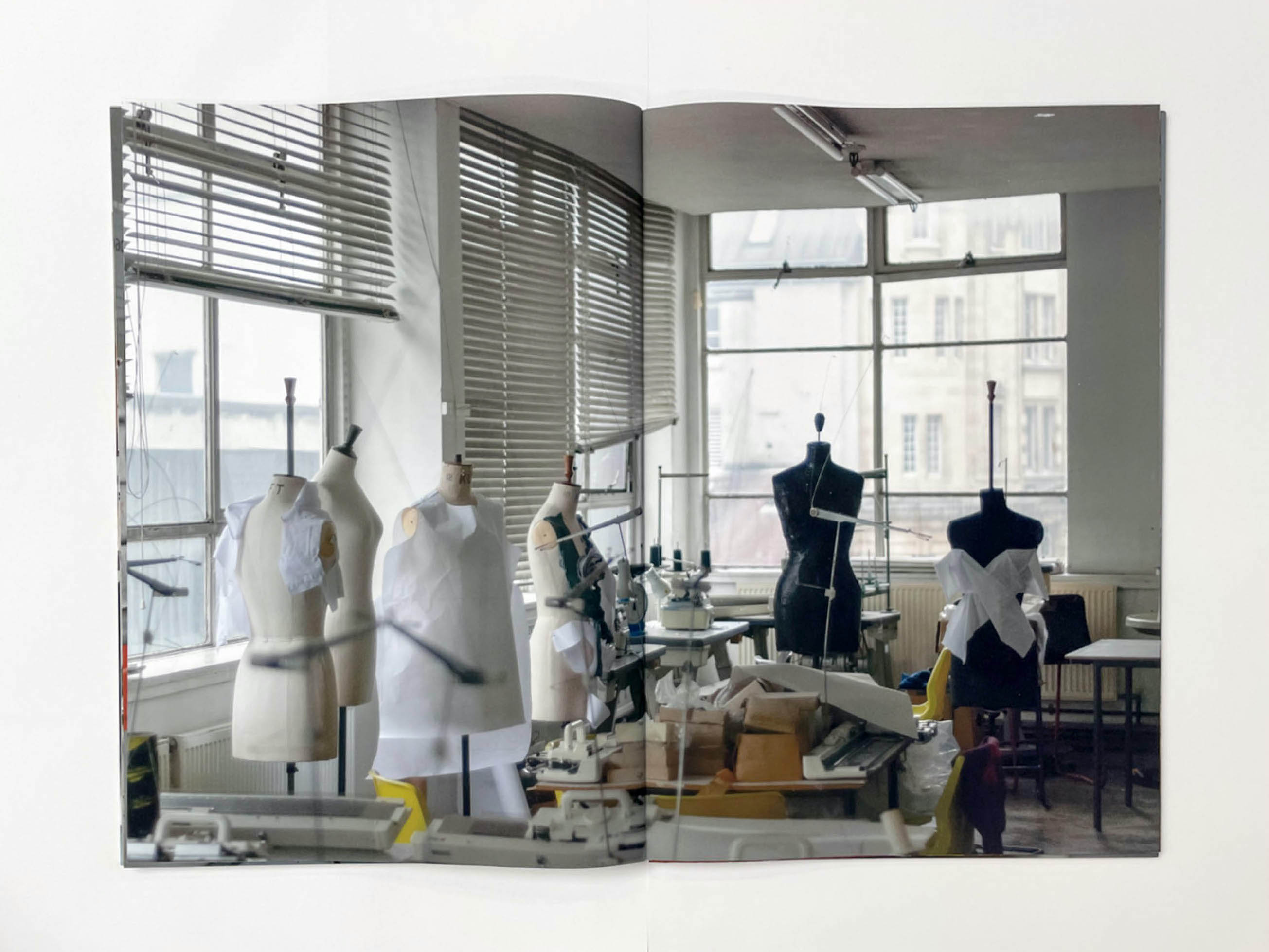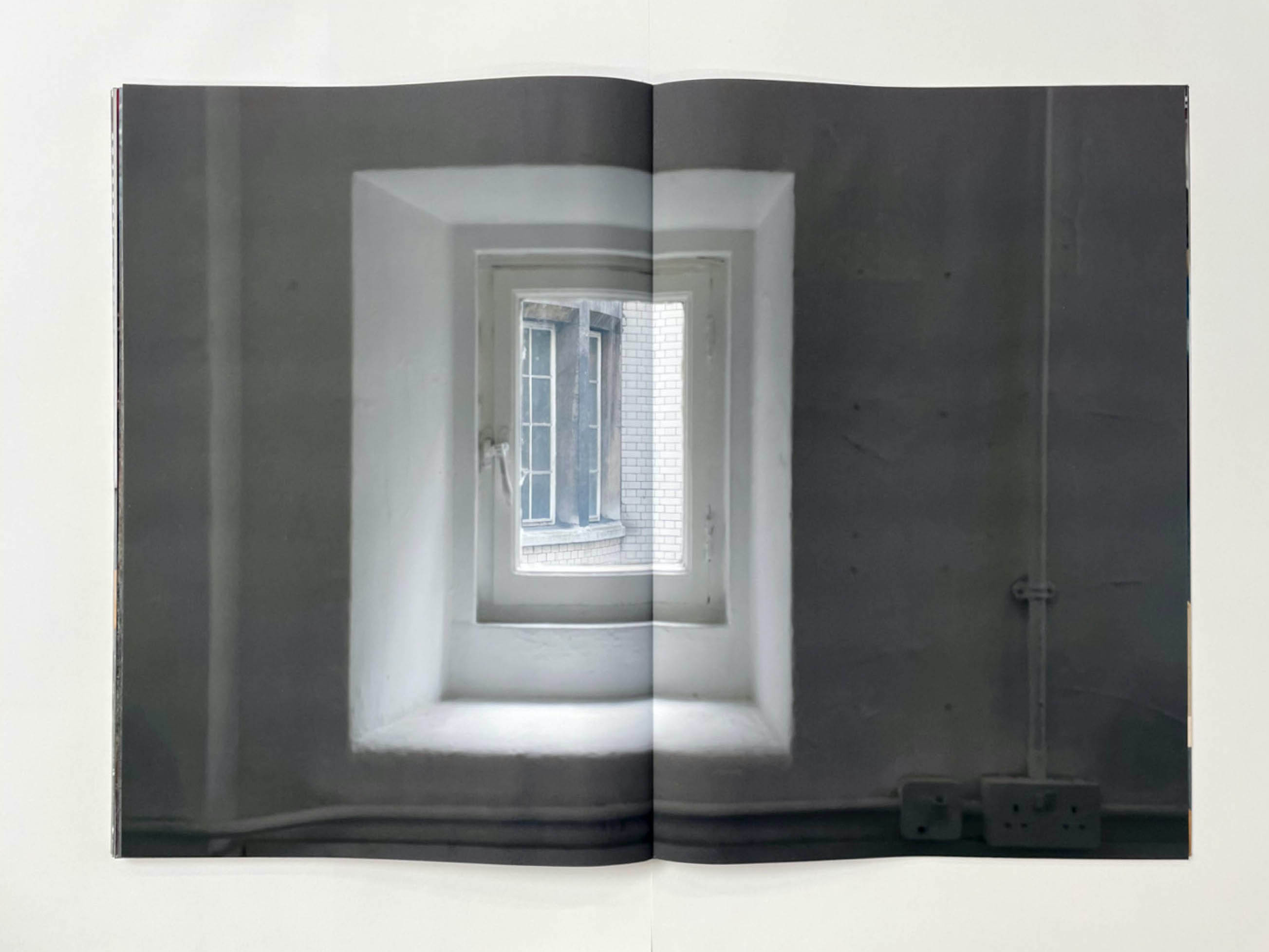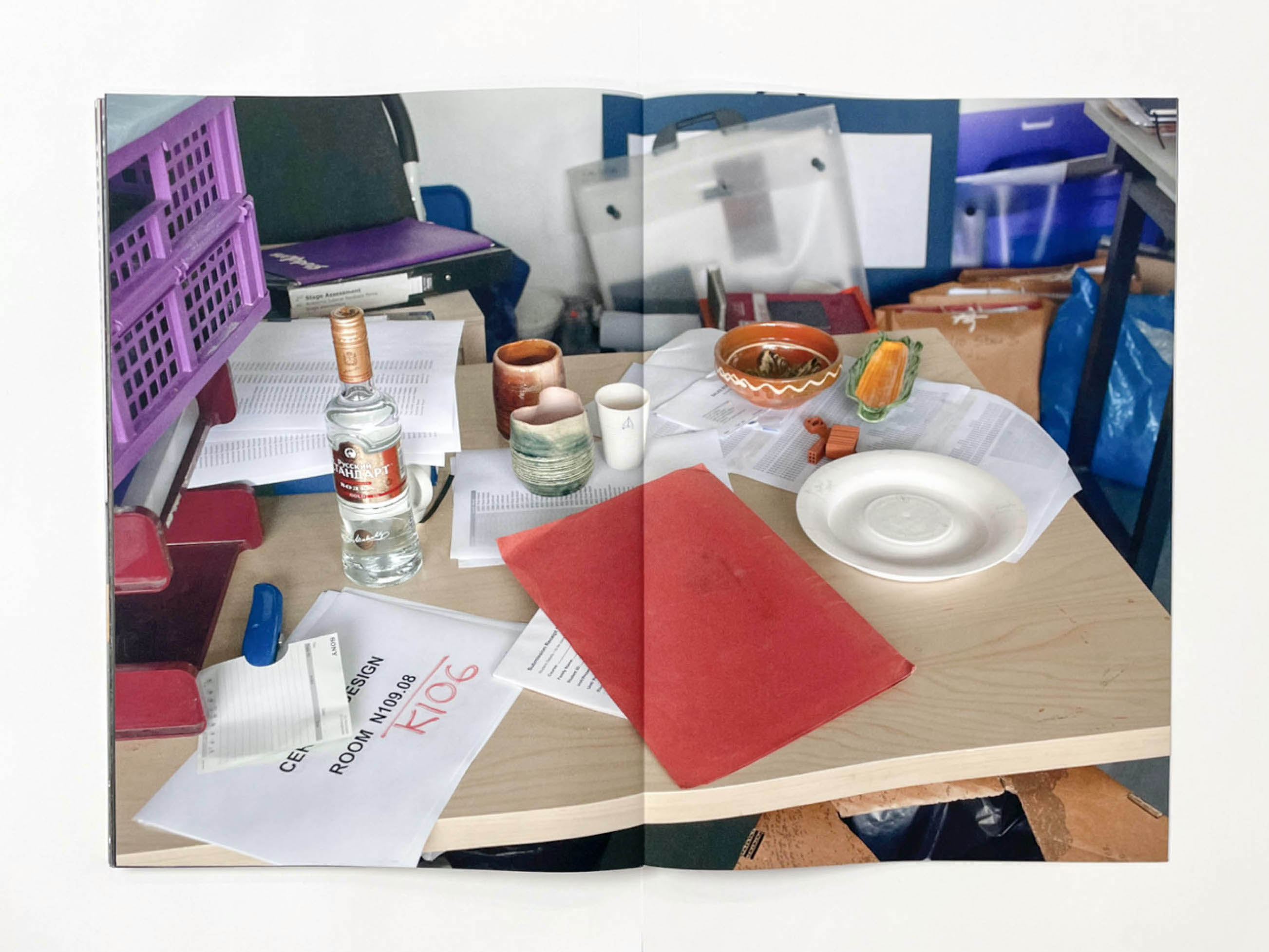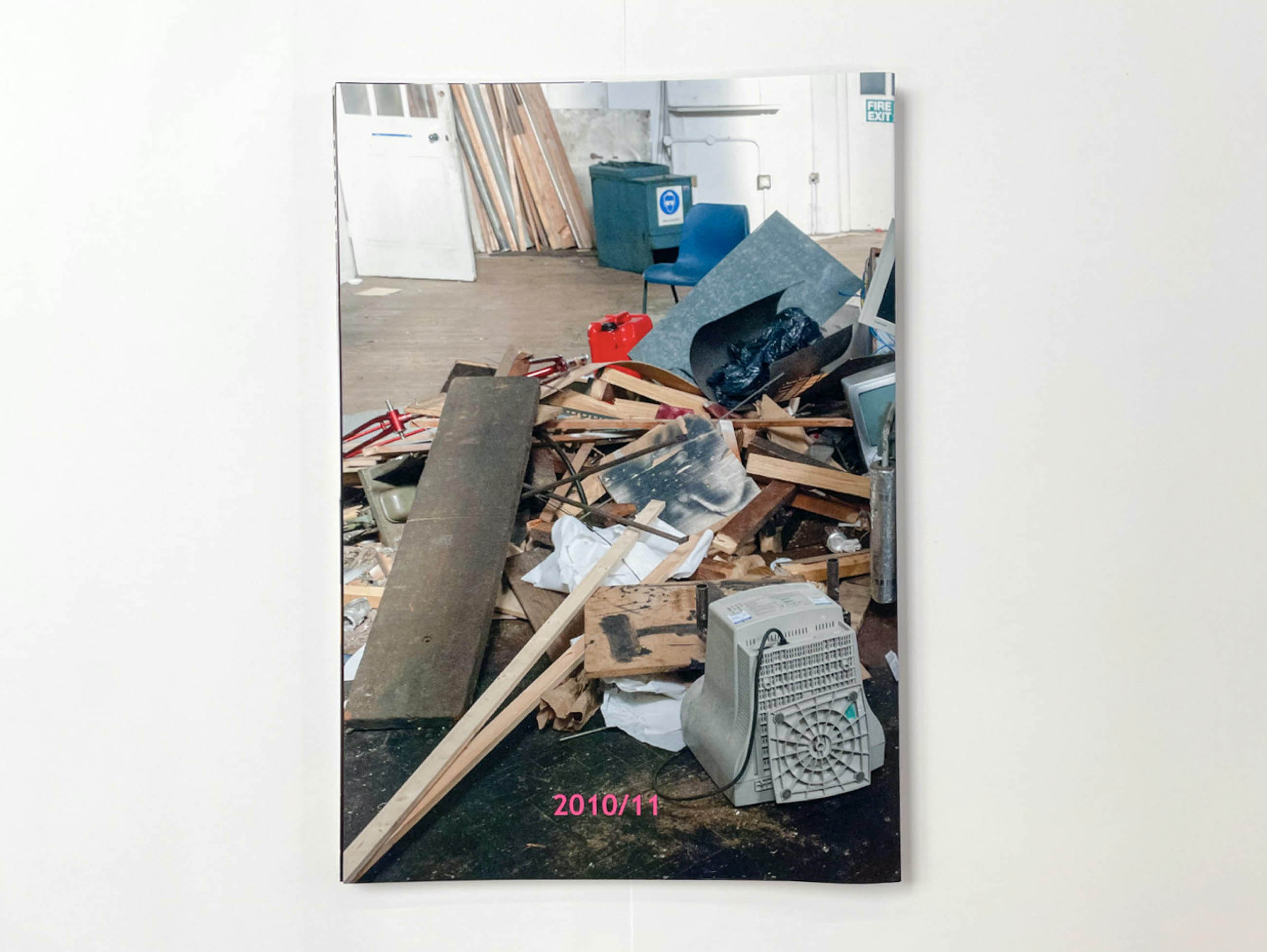Art School

































Dimensions: w: 29cm, h: 41.2cm
Photographs (31): 2011–2012
Book: 2021
In 2011 the art and design college where I work packed up and moved to a new location. It left behind the purpose-built premises it had occupied for just over a century. The old building was solid as a mountain, though the parquet floors creeked underfoot, accumulated layers of dust and always seemed in need of a polish.
The light on the building’s lower floors was invariably occluded. There was a sense of long time that had accrued in its shadows. Even those rooms with windows that looked onto the central light-well or the streets outside were dim because of the layers of dust and dirt. Climb up the beautiful spiral staircase that led off the entrance hall and the light, even the air, seemed brighter and a little thinner by the time you reached the top floor.
This work was originally going to be called Labyrinth because the building really felt as though one might turn a corner and find oneself lost, unable to find one's way back. Wholly absent in these images, of course, are the teachers and students, the people who animated these spaces, left their marks, and worked so hard to think about, design and make so many things for wider social benefit over the space of ten decades. Some of the affectionate gestures left on the walls provoked the ire of the then head of college, this was after all a historic property for sale on the open market.
I’d worked in the building for three years by the time of the move. I would haunt the corridors in my lunch break and at day’s end. My admin job provided me with no privileged access, but I would try doors hoping they’d be unlocked or dash in as a cleaner departed. I was thrilled when I discovered a new space, whether that was the eery, cramped undercroft, the narrow areas behind the stage in the college’s theatre or the roof with its views over London. I know I didn’t see every space, but still feel pleased at what I was able to find.
There is a sense both of melancholy and hope in these photographs. There’s also an implied question: is this the death of the art school? Are the tenets of the last century moribund in the ever-tightening grip of capitalism or can they be upheld even strengthened, however much it's seemingly against the odds? Was the college’s move an act of creative destruction and rebirth or the equivalent of Silicon Valley’s awful cliché of disruption. The relocation was certainly prompted by a lack of government funding and the financial untenability of undertaking essential repairs and refurbishment. The college’s new location is at the heart of a new pseudo-public development and successfuly served as a ‘cool attractor’ to other potential, corporate clients.
At time of writing, the old building has lain empty for a decade, serving only as a backdrop to film and television dramas, such are the deep pockets of its corporate owner. Recently, though, came the headline: “ORMS bags planning for £242m hotel complex in Bloomsbury”.

This work is licensed under a Creative Commons Attribution-NonCommercial-NoDerivatives 4.0 International License.